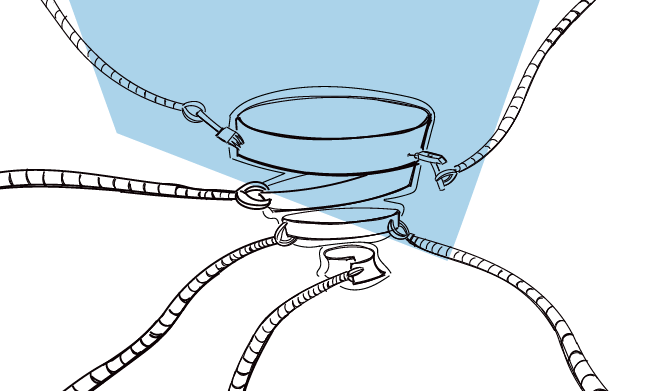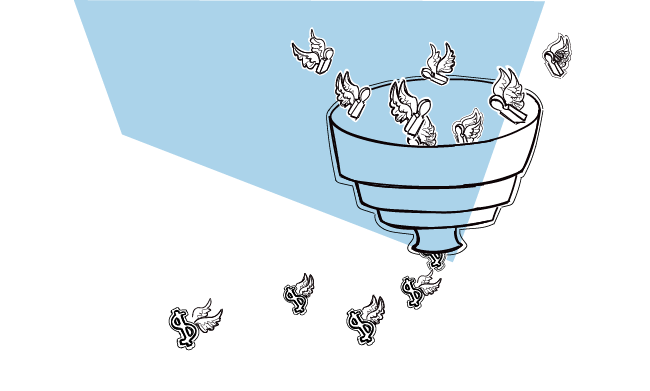A few weeks ago I wrote about how to build an outbound sales pipeline . However, creating a sales pipeline is only one side of a coin. The other one is to manage it effectively, so your customer base keeps growing.
The first step to manage your sales pipeline more effectively is to analyze sales reports. A look at your sales stats should give you a hint on where to start. Here’s how you can identify and fix the cracks in your pipeline or remove any possible clogs.
My positive reply rate is struggling
To get more positive replies you should ensure that the leads you generate are the best fit for your product and your value proposition matches their needs. Here’s what you can do to manage this stage of your sales pipeline more effectively:
Update your Ideal Customer Profile
As your company grows with time, in most cases your Ideal Customer Profile will evolve along the way too. Keep your eyes on the ball. Analyze your customer data regularly, review your ICP against it, and freshen it up if need be.
Here’s How We Reworked Our Ideal Customer Profile >>
Segment your prospects and fine-tune your value proposition
It’s much easier to tailor a value proposition to a smaller, more homogenous group of prospects than find one that fits all. Try to divide your prospect base into smaller segments. It will be easier for you to create a message that will hit the right chord.
Read more about how to make your value proposition actually valuable to the addressee: Value Proposition – How to Tell My Addressee What I Want from Them? >>
My open and reply rate could use a boost
If you want to work on improving these two metrics, you should first focus your attention on email subject line and content, respectively.
Try using a different subject line
Email subject line, just like a book title has the power to spark curiosity and grab your prospect’s attention. To do that, it should be intriguing, but not clickbaity. Never ever make a false promise in your subject line. If an addressee opens your email it means they have some expectations for what’s inside. If the content of the email doesn’t match those expectations, your prospects may feel confused or even slightly cheated on. Clickbaity subject lines may get your open rate skyrocket, but your credibility will nose-dive.
So how to come up with a spot-on subject line? One way may be to address your prospect’s needs. This way you catch a prospect’s attention (the first principle of a good subject line). But you also promise value that a prospect can get from your email.
Here’s more on how to create a subject line based on needs + some examples >>
You may also experiment with subject line personalization and include your prospect’s name or their company’s name in it. This way you will add even more uniqueness to your campaign.
A/B test your message copy
While the subject line catches a prospect’s eye, the email content hooks their attention and builds engagement. A low reply rate may indicate that prospects didn’t find your message copy compelling, relevant or valuable enough to respond. Provided you target the right people, the problem lies not in what you wanted to communicate, but how you did it.
Try to prepare a different version of your email. Adjust a value proposition to better fit the needs of your target group. Add some tweaks to the tone and style of your message. Shorten it, if necessary. Add some open-ended questions to spark a conversation. Come up with a clearer CTA.
Then, divide your prospect base into two homogenous groups. Send the original version of the copy, let’s name it version A, to one group and the altered copy, version B, to the other group. The results will tell you which version turned out to be more effective. But mind you to make only one major change to the copy at a time. Otherwise, you won’t be able to tell what element made the difference.
This method is called A/B testing or split testing. You can learn more about it from this blog post: My open, reply or interest cold email metrics are low, what can I A/B test? >>
And always follow up with those who didn’t reply
At least one follow-up in your email sequence is a must. Keep in mind that your prospects are busy people. They have a lot on their plates and might have simply forgotten to respond to your email. Or they didn’t even see it because their mailbox gets flooded by hundreds of messages each day.
Another reason for why you didn’t hear back from your prospects may be that they need some more nurturing to commit. They may still have some objections or don’t quite see the value of your product or service in their business context.
That’s why each of the follow-ups in your email sequence should bring additional value to the recipient. Instead of reminding them that you’re still waiting for their response or nudge them to let you know whether they got your message (these kinds of follow-ups are hated by everyone, aren’t they?), give your prospects some food for thought.
Share a relevant customer case study that features a similar company or their business peer. Invite them to a webinar. Send them a link to a knowledge-packed ebook that proves you’re a subject matter expert in your niche. Give them a reason to trust you and start a business relationship with you.
Be careful not to switch the focus from them to you. Your follow-ups should be as prospect-oriented as the opening email. Also, know the thin line between being persistent and pushy. 2-3 follow-ups per sequence is the optimal number you ought to stick to.
Along with refining your email strategy, consider using tools like a sales tax calculator to ensure accurate pricing and avoid potential friction during the negotiation process.
I need to improve my win/loss ratio
Losing leads in the final stage of the pipeline is especially painful because your team has put all that hard work and effort into building those relationships. Here’s what you could work on to increase your closing ratio.
Rework your demo call scenario
If you lose touch with your leads after the meeting it may be a sign that you should add some tweaks to your demo call scenario. Maybe recraft your value proposition, so it’s better tailored to the needs of a specific prospect group. Focus on what matters to them the most, instead of talking about each and every feature of your product.
Treat your demo as a conversation, not a monologue. Listen to your prospects carefully and ask questions. Since you’re very close to winning the deal, it may be tempting to cut to the chase and jump straight to the details of your offer. Resist this temptation and try to fuel your prospect’s interest instead. You can, for example, show them interesting examples of how other customers from their business niche benefited from your product or service.
Follow up with those who didn’t show up for a demo call
Don’t write off leads who didn’t show up for a demo. Sure, you shouldn’t pursue every lead at all costs. But if you feel they are a good fit for your product, follow up with them and ask if they’d like to schedule another meeting. This one step added to your sales pipeline can be a real game-changer for your conversion.
To sum up
Keep in mind that data should be the foundation of how you manage your sales pipeline. Sales stats can give you a clue about what stage of the pipeline needs to be optimized. Sometimes even a small adjustment leads to great results, so try to take one step at a time and monitor the changes.
READ ALSO

How to Build a Sales Pipeline to Turn Your Outbound Leads into Customers?
In business, nothing can be left to chance. Otherwise, you won’t make much progress. When it comes to sales, in order to turn more leads into customers, you need to set your internal guideposts that will make the whole process more effective. That’s what a sales pipeline is at its core. Let me show you how to build a sales pipeline from scratch following this six-step tutorial.

Cold Email Benchmarks by Campaign Size & Industry: What Makes Cold Emails Effective?
Cold emailing has changed a lot since its early days. So did the definition of an effective cold email campaign. Let’s see how to approach cold emailing to get the most out of it in 2020. Take a look at the benchmarks I’ve prepared and compare your results with the average stats to make sure you’re on the right track for success.

How to Manage a Sales Team to Make Prospecting Predictable?
Outbound emailing requires a lot of research into a target group and A/B testing before it can take off and become truly predictable. It's not unusual that a sales team (ours included) loses its motivation before that happens. Either that or they lose focus and target prospects ad hoc, just to get their numbers right. There is something that helped us. It is a proper goal setting.

